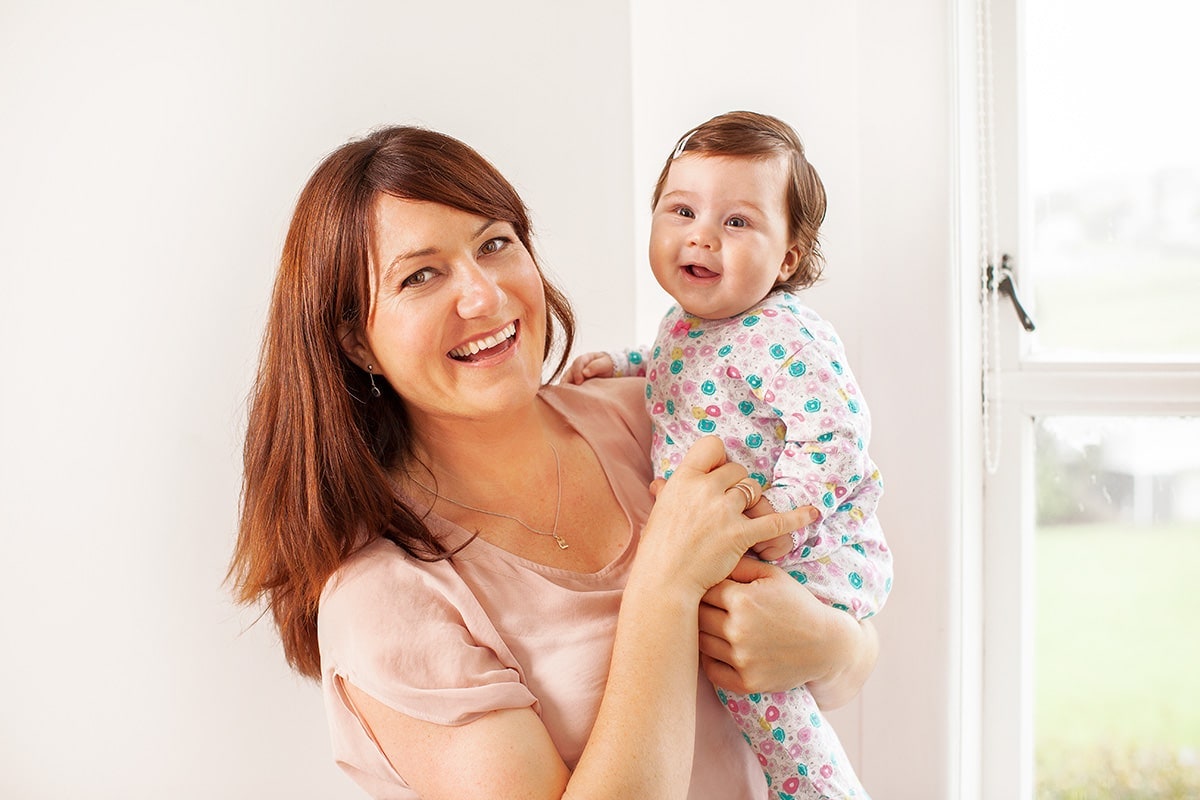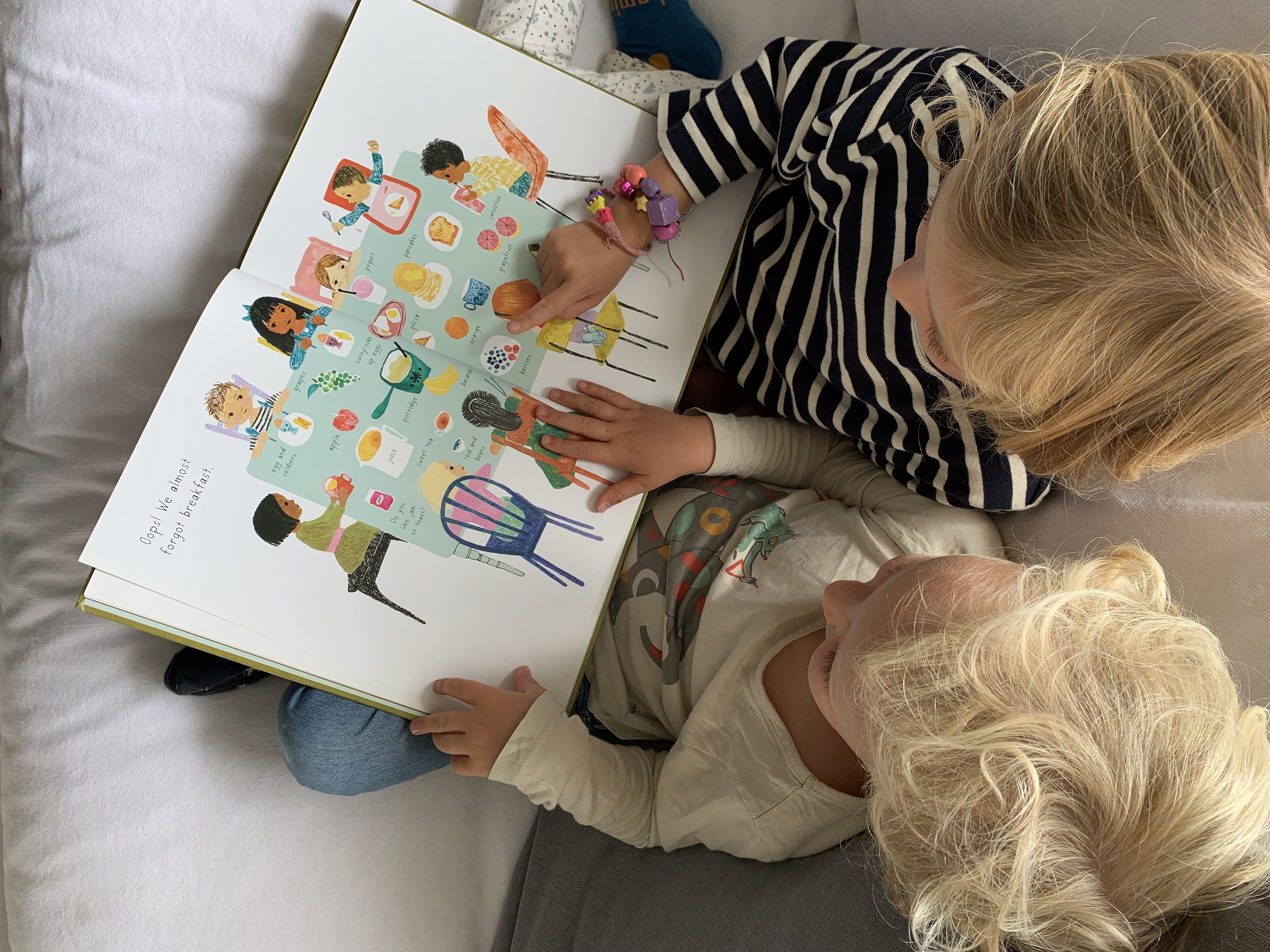
Q&A with Luka McCabe
As part of our Together Nature Baby Community series, the lovely Luka McCabe, answered your questions on introducing little ones to nutritious solid foods. Luka is a midwife and nutrition consultant and runs the Instagram page and blog Boob to Food.
When do I start my baby on solids?
There is a lot of conflicting information out there about this, as some people say 4 months and some people say 6. The actual current guideline is to start around the 6 month mark – as this is when most babies have reached their developmental signs of readiness. There is no magic switch, and everyone reaches this around different times, but in saying this, I have personally never met a baby who had reached this at 4 months.
Therefore, it is important to know what to look out for! Firstly, is your baby can sit up with little or no support for a period of time, as this is a sign their digestive system is mature enough to handle food. As food goes into the digestive system, the muscles in that area need to be ready to function – and sitting up is a sign of this core strength. This is the top developmental sign to look out for, but if your baby isn’t doing this by about 7 months I would recommend starting them anyways – on purees which are easier to digest.
Next, is that they can tell you when they want food or have had enough. This is done through your baby reaching for food you are offering, as opposed to them having no involvement in the meal. It is then also important to respect their signs of fullness, so if they are turning or pushing away food it’s a sign they’ve probably had enough.
Another sign is the loss of the ‘tongue thrust reflex’. This is something your baby does as a preventative against choking, and is usually lost around 4 months. Once they are ready for solids, this automatic reflex goes away. If they spit their food out occasionally, that’s normal – this reflex is more when anything goes near their mouth they automatically push it away.
Picking things up with their fingers, and having grasp is a sign as well. Other signs include a willingness and excitement around meal times – but this can be a false sign also as it is part of their developments and wanting to be involved. However, once all these signs come together, it should give you a good indication of your baby’s readiness for solids.
What is the best way of feeding my baby? Baby-led weaning, purees, etc.
I am a huge advocate of doing what is comfortable for your baby. If baby-led weaning is stressful for you, don’t do it. If you find it easy, then do it. There is really no right or wrong in terms of methods. There are pros and cons for each, which are important to know before you make your decision.
Firstly is spoon feeding for pureed food. This means you generally make separate meals for your baby, or are pureeing your meals. This method means you are doing the feeding, and the food has a smooth consistency.
Benefits include that you can provide lots of nutrients, such as blitzing up iron rich meats and bone broths into the puree, and your baby gets a range of nutrients.
It also might help you feel more comfortable feeding your baby, as the alternative might stress you.
The alternative is baby led weaning, or finger food. These are great in many regards.
You offer appropriate shapes, textures and sizes, and the baby picks it up and eats it.
It’s great for learning to chew and self-regulating their appetite, as it is easy to over feed with puree.
It’s important to respect their signs of fullness with puree, but with baby led weaning they do all the work and develop appetite control, safe eating, and grasping.
However, I personally used combination feeding. This means using both methods – so maybe starting with spoon feeding and moving onto baby led weaning when you feel more confident.
There are a lot of foods which can be stressful – such as meat. This is one I am asked about a lot, so sometimes it can be good to puree these foods as well as offering finger food.
Benefits include your baby is getting good nutrients, you feel confident, and they are still getting benefits from baby led weaning.
An example is giving some soft slices of avocado for a play and taste, followed by a meat puree.
Another option is popping some puree onto their high chair, for them to explore colours and textures – or giving them the spoon to play with. Really, it’s about finding what works for you and your baby best.
What is gagging and choking?
This is why baby-led weaning needs to be comfortable for you, as gagging is a really normal development for babies. It teaches them to know how much to put in their mouth and how far back to put things, as gagging is a preventative of choking.
It is important to know the differences. Gagging is very loud – it is noisy and dramatic, with choking and spluttering. If and when your baby gags, you shouldn’t try and interfere. When a baby gags, it is learning to move the food to the front of the mouth – if you put your fingers in, you run the risk of pushing the food to the back and causing choking. It is important to let them do the work. A little vomit is normal too, and it is all a learning experience.
It is recommended that by 9 months, your baby should be eating finger foods, but don’t feel bad as it is okay to start slow with spoon feeding. Most important is to be comfortable around this time, as if you are stressed your baby will pick up on this. That’s why, to me, it is most important to feed your baby how you want.
Choking, on the other hand, is completely silent. It’s very, very rare, and will only happen if you aren’t offering safe size foods. This happens when the baby’s air way is completely occluded – meaning the food is too hard or round. A good way of gauging, is putting your thumb to your first knuckle – so things like a cherry tomato or a grape are too big. This won’t let any air come in, so they won’t be able to make any sound and will lose colour rapidly. This is when you need to intervene. A baby first aid course could help you feel more comfortable for if this was to happen – but it is really rare.
What are the right foods?
You need to offer foods of safe size, shape and texture. Generally, the rule is that you feed babies foods which are your fingers length, shape, size and texture. This is because foods like this allows your baby to hold the food at the bottom, and take bites.
This food will be narrower than their airway, as smaller bites are taken. You can also offer small slices to ensure this.
In terms of texture, you should be able to squish the food between your finger and thumb – as it means your baby can do this with their pallet and tongue.
If you can’t get a food into a finger shape, like a grape, you should cut it into quarters. However, I would stick to the finger rule for the first few months.
Meat should be slow cooked or poached, to be as soft as possible, and offered in strips.
What foods should I start on?
My recommendation is nutrient dense wholefoods. Part of the reason I got into baby food, is that I was told to start my baby on rice cereal. This seemed odd to me, and as I researched I found out that one of the biggest requirements of a baby is iron. Rice cereal has a fortified version of iron, but I was confused why synthetic iron was being introduced over natural iron.
From this, I found that foods like red meat are going to meet so many needs, with high fats and iron. For example, liver is a really, really good way of getting iron rich food into your baby. You can just fry it into strips or puree it, as well as grating it onto meals.
Avocado is great, in terms of healthy fats and being soft. it doesn’t have much flavour, so is a great first food. Others include root vegetables like pumpkin and squash, and any other veges which are in season. You can steam or bake them. Oils are also great, such as coconut or olive, for high fats.
Once your baby is used to low allergen food, you can start on foods like egg yolk. I recommend the yolk over the white, as the white is where the allergenic proteins tend to be. I have some recipes on my website, www.boobtofood.comfor introducing this!
Other good meats are chicken thigh, and then fish – which is high in good fats like DHA, calcium and D3, but I would focus on whatever is wild and sustainable in your area.
If you’re baby led weaning, it’s good to offer them foods you’re eating, such as roast veges. I also love bone broth – which I make myself. There are some good pre made ones too. I would enrich purees with this, as it helps food digest. All food should be easy to digest.
Around 8 months you can move on to beans, lentils, quinoa and other grains. This can be followed by oats and rice – and you gradually just work your way up, but I would always soak these first to optimise nutrient content and aid digestion.
How much food should I start on?
Every baby is different. Some might start on a teaspoon a day, and some will want more. As I said earlier, it is important to respond to their signs of fullness.
Some people want a guideline, so I would recommend starting small. I recommend starting food around mid-morning, after a milk feed, with 1-2 teaspoons once a day. This means they have the day to digest it.
From this you can work up to twice a day around 7 months, and at 9-12 months you can expect up to 3 times a day.
Do solids help sleep?
In my experience, no. Some say protein at lunch, but this can’t be applied to everyone!
What if my baby isn’t interested in solids?
I get this question a lot – some babies take longer to be interested. However, generally by 9 months they should be. If your baby is 6, 7, 8 months and is thriving otherwise, I wouldn’t worry. Just keep offering food and supplying milk. If they get to 9 months, take them to your health provider for peace of mind and to check everything is okay.
How do I introduce top allergen foods?
There are 9; eggs, fish, soy, wheat, cow’s milk, shellfish, sesame, peanuts and tree nuts, which cause 90% of allergies. It is currently recommended you introduce these between 9 and 11 months, to lessen the risk.
I recommend these after low allergen foods have been introduced and are tolerated well. Do this slowly and mindfully, but the key is repeating exposure, every four days. This gives time to assess if there is any sensitivity or intolerance. Once you know they can tolerate it okay, it’s good to just keep it in a regular rhythm in their diet.
Thank you so much for joining us Luka! We hope this has helped navigate introducing solids to your little one xx Nb





